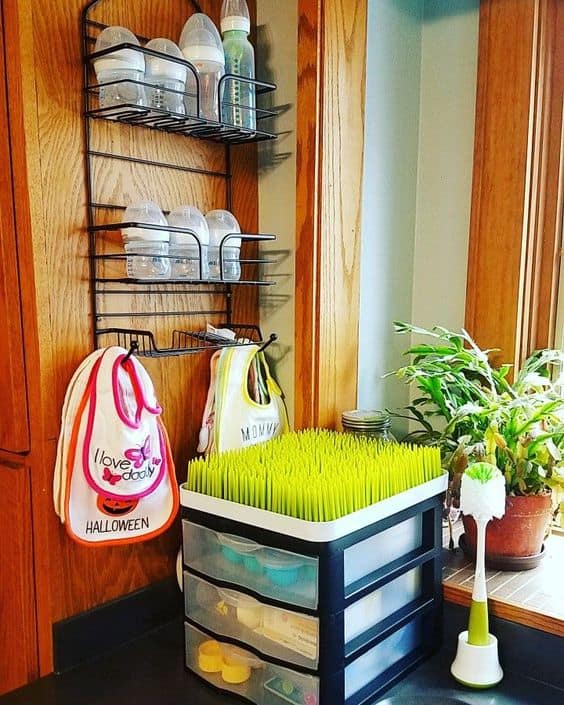Efficient Ways to Store Baby Bottles: A Complete Guide
Storing baby bottles in a neat and organized manner is essential for maintaining cleanliness and efficiency in your baby's feeding routine. With proper storage techniques, you can ensure that bottles are readily accessible when needed and remain hygienic between uses. Here's a comprehensive guide on how to store baby bottles effectively:
1. Clean and Sterilize Bottles
Before storing baby bottles, it's crucial to clean and sterilize them thoroughly to remove any milk residue or bacteria. Wash bottles, nipples, and caps with warm, soapy water, then rinse them thoroughly with clean water. Sterilize the bottles by boiling them in water for at least 5 minutes or using a sterilizing machine.

how to store baby bottles
2. Choose a Suitable Storage Location
Select a designated storage area in your kitchen or nursery for baby bottles. Ideally, this area should be clean, dry, and easily accessible. Consider installing shelves, cabinets, or drawers specifically for storing baby feeding essentials to keep them organized and within reach.
3. Use Bottle Drying Rack
Invest in a bottle drying rack to air-dry cleaned and sterilized baby bottles, nipples, and accessories. A drying rack helps to prevent moisture buildup and allows bottles to dry thoroughly before storage. Choose a rack with ample space and separate compartments for different bottle parts to promote proper airflow.
4. Store Bottles Upside Down
After drying, store baby bottles upside down to prevent dust or debris from collecting inside and to allow any remaining water to drain out completely. Place bottles on a clean, dry surface or in a designated bottle storage rack with slots for upright storage.
5. Organize Bottles by Size and Type
Arrange baby bottles in your storage area by size and type to facilitate easy access and retrieval. Group bottles of the same size and brand together and separate them from other feeding accessories such as breast pump parts or bottle brushes. Consider using dividers or bins to keep bottles organized and prevent them from rolling around.
6. Keep Bottles Covered
Cover stored baby bottles with clean caps or lids to protect them from dust, insects, and other contaminants. If storing bottles in a cabinet or drawer, consider using storage containers with lids to keep bottles safely contained and shielded from external elements.
7. Maintain Regular Cleaning Routine

how to store baby bottles
Regularly clean and disinfect your baby bottle storage area to ensure a hygienic environment for storing feeding essentials. Wipe down shelves, racks, and storage containers with a mild disinfectant solution or baby-safe cleaning spray. Remove any expired or damaged bottles and replace them as needed.
Conclusion
Proper storage of baby bottles is essential for maintaining cleanliness, organization, and hygiene in your baby's feeding routine. By following these tips, you can ensure that baby bottles are stored safely, readily accessible, and free from contaminants. From cleaning and sterilizing bottles to organizing and maintaining a dedicated storage area, implementing these storage techniques will help streamline your baby's feeding process and provide peace of mind for you as a parent.